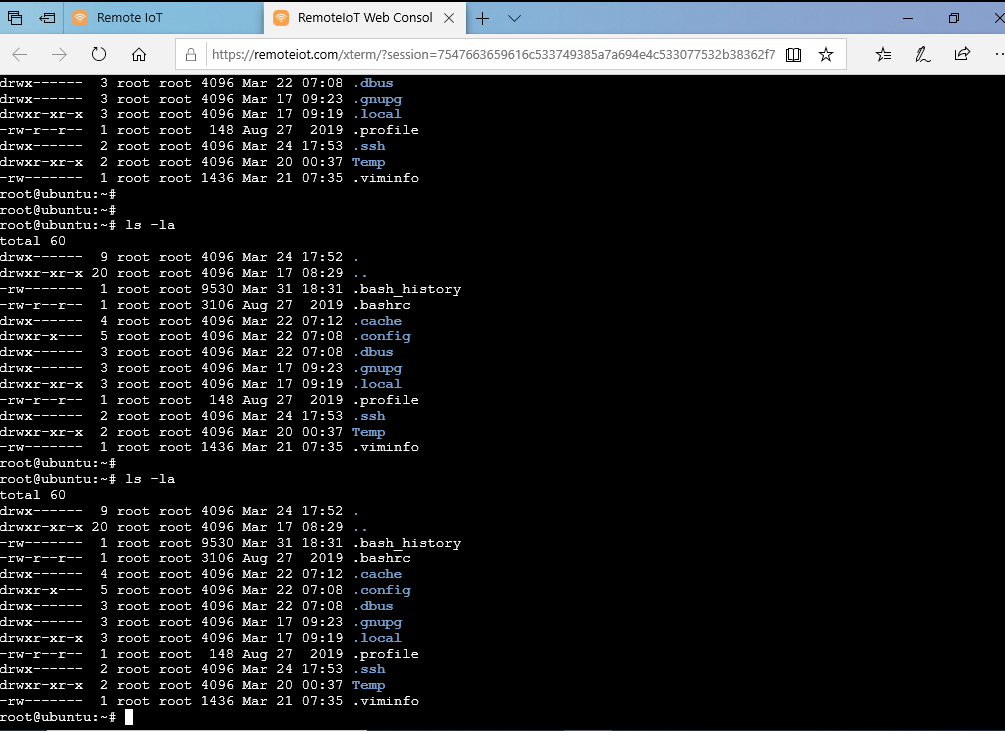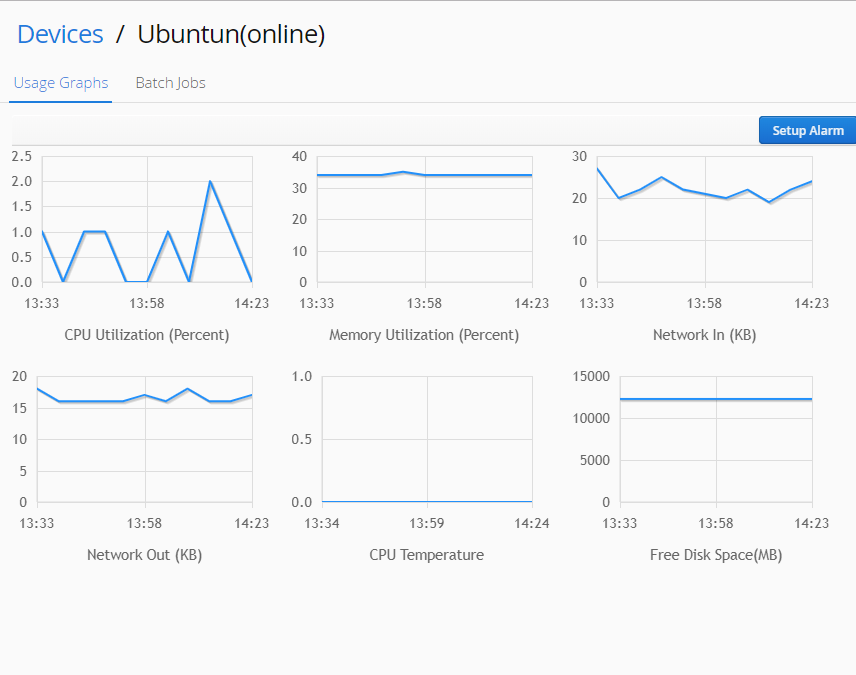
Utilizing a microcomputer externally could be notably beneficial, nevertheless this besides presents imminent guarding dangers. To curtail such hazards, introducing effective guardrails and comprehending how Network Address Translation (NAT) acts is key. A firewall acts as a protector between one's Pi and the outside world, authorizing you to control incoming and outgoing traffic based on fixed rules. By configuring your firewall to only authorize trusted connections, you can significantly amplify the security of your device.
IP sharing units are another noteworthy element in remote access security. They distribute private IP addresses to devices within your network and present a single public IP address to the outside world. This mechanism helps to protect the internal network structure, making it complicated for attackers to target individual devices. By employing both firewalls and NAT routers, you can create a secure and robust remote access solution for your Raspberry Pi.
Interacting with IoT Devices from Anywhere the Firewall
The world of Internet of Things (IoT) offers exceptional opportunities for orchestration, but it also poses unique obstacles. One key problem is securely utilizing these devices from remote locations. Traditional firewalls, designed to protect networks from external threats, often limit access to IoT endpoints, inhibiting the full potential of connected gadgets. To overcome this problem, innovative approaches are emerging.
- Distributed platforms allow for trusted access to IoT devices, enabling users to supervise them from anywhere with an internet access.
- Confidential Network tools create a confidential tunnel between the user's device and the IoT network, safeguarding data during transfer.
- Strict Access protocols enforce strict access controls, examining the identity of users before granting them access to specific devices.
By embracing these platforms, organizations can utilize the full benefits of IoT while ensuring the protection of their valuable data and network.
Building Bridges: Interfacing to Raspberry Pis Behind Network Address Translation (NAT)
Network Address Translation (NAT) can sometimes pose a hurdle when trying to link to your Raspberry Pi from outside your local network. While NAT effectively masks private IP addresses, it can make direct connections complicated. Fortunately, there are several solutions to bridge this gap and enable seamless remote access to your Raspberry Pis.
- One common approach is to utilize a Dynamic DNS service, which provides a constant hostname for your Pi that updates automatically even when its IP address changes.
- Another option is to set up port forwarding on your router, allowing specific ports on your Raspberry Pi to be passed to public IP addresses. This method requires careful configuration and understanding of network protocols.
- For more secure access, consider implementing a VPN (Virtual Private Network). A VPN encrypts your connection and routes it through a confidential server, masking your real IP address and providing an extra layer of protection.
By exploring these strategies and selecting the most appropriate solution for your needs, you can effectively bridge the gap created by NAT and gain reliable remote access to your Raspberry Pis, unlocking their full potential from anywhere with an internet connection.
Opening Remote Paths: IoT Device Access Within Firewalls
Remote access of IoT devices occasionally be a challenge when facing firewalls. These security measures intended to protect your network can sometimes impede your ability to control your wired devices from afar. However, understanding the principles behind firewall operation and implementing specific configurations can open a secure pathway for remote access.
One typical approach is to build port forwarding rules. This necessitates directing specific IP addresses and ports to your IoT device, effectively creating a direct connection. Another method relies on VPNs (Virtual Private Networks). By establishing a secure tunnel between your device and the network where your IoT device resides, you can circumvent firewall restrictions and gain access to your devices remotely. It's imperative to remember that implementing these solutions depends on a thorough understanding of your network infrastructure and security protocols to safeguard the integrity and safety of your system.
- Adopt strong passwords for your router and IoT devices.
- Frequently update firmware on your router and IoT devices to remedy security vulnerabilities.
- Deactivate any unnecessary services or ports on your router.
Managing Firewalls for Remote Raspberry Pi Management
Remotely handling your Raspberry Pi has the ability to be a powerful way to exploit its capabilities. However, firewalls are crucial for guaranteeing the security of your device. Properly configuring firewall rules supports you to direct incoming and outgoing network traffic, halting unauthorized connections. Understanding how to work with these settings is crucial for maintaining the integrity of your Raspberry Pi.
- Apply a firewall software solution designed for Raspberry Pi. Numerous alternatives are available, each with its own set of traits.
- Set clear rules that detail which ports should be open and which should remain blocked.
- Analyze the use of a VPN for an extra layer of encryption when utilizing remotely.
Bear in mind that firewall policies must be personalized to your specific criteria.
Mastering Remote Control: Managing IoT Devices Past NAT
Effectively directing your Internet of Things (IoT) devices from a remote location presents unique challenges. NAT (Network Address Translation), commonly used in home and small office networks, can complicate this process. This guide will delve into the essential steps to securely access and administer your IoT devices behind a NAT firewall.
- Before anything else, establish a secure connection between your remote device and your local network using a reliable VPN protocol like OpenVPN or WireGuard.
- In the next step, configure port forwarding rules on your router to allow incoming traffic to the specific ports used by your IoT devices. Ensure you only forward traffic to the required ports and use strong passwords for authentication.
- To finish, consider implementing multi-factor authentication (MFA) for added security when accessing your IoT devices remotely. MFA adds an extra layer of protection by requiring multiple forms of verification, such as a password and a unique code sent to your phone.
By using these best practices, you can safely and securely handle your IoT devices from anywhere with an internet connection.
Shielding Remote Access to Your Raspberry Pi
Wishing to access your Raspberry Pi offsite? A firewall is essential for safely enabling remote access. It acts as a gatekeeper, blocking unauthorized network attempts while allowing permitted requests through. By implementing proper firewall configurations, you can ensure your Pi remains secure even when accessed remotely.
Begin by identifying the services you need to expose externally. FTP servers are common examples. Configure your firewall to accept inbound packets on the specific ports used by these services. Remember, a well-configured firewall will only open the necessary doors, curbing potential vulnerabilities.
- Apply a robust firewall software package designed for Raspberry Pi, such as UFW or iptables.
- Arrange strong passwords for your remote access accounts.
- Consistently review and update your firewall rules to address any changes in your infrastructure.
Connect Remotely to Raspberry Pis Through Firewalls and NAT Routers
Securing your Raspberry Pi within a network environment often involves traversing firewalls and Network Address Translation (NAT) routers. This can seem daunting initially, but understanding these components is crucial for safely connecting to your device from afar. This guide provides an in-depth walkthrough of common techniques for remote access, empowering you to direct with your Raspberry Pi effectively regardless of its physical location.
We'll delve into the fundamentals of firewalls and NAT, outlining their roles in network security. Then, we'll explore various alternatives for establishing secure connections, including SSH tunneling, VPNs, and port forwarding. What's more, we'll provide practical steps and examples to help you implement these techniques on your own setup.
By mastering the art of remote access, you can unlock a world of possibilities for your Raspberry Pi projects, enabling you to monitor performance, resolve issues, and even control your devices remotely.
Fortified Remote Access for Your Raspberry Pi
Want to access your Raspberry Pi from anywhere? Follow these tips to set up secure remote access. First, decide on a suitable protocol like SSH or VNC. Next, install the necessary software on your Pi. Build a strong password and enable two-factor authentication for added security. Then, assign the required ports on your router to your Pi's IP address. Finally, test your connection from a remote device.
- Deploy firewalls to protect your Raspberry Pi.
- Refresh your software up-to-date to patch vulnerabilities.
- Monitor your system logs for suspicious activity.
From Home Network to the World: Remotely Controlling Your Raspberry Pi Across Firewalls
Your embedded computer can be much more than just a local project. With the right setup, you can control it from anywhere in the world, regardless of firewalls or distance. This opens up a universe of possibilities - managing your home automation, accessing data remotely, or even running distant services directly from your Pi.
While this may seem daunting at first, setting up remote access for your Raspberry Pi is surprisingly straightforward. You'll need to configure your network settings, set up a secure connection, and choose the right tools for controlling your device remotely. Here are some basic rules to get you started:
* First, ensure your home network is configured properly. This includes setting up port forwarding rules to allow access to your Pi from outside your local network.* Next, choose a secure connection protocol like SSH or VPN. These protocols encrypt your communications and protect your data from sniffing.* Finally, select a remote control tool that suits your needs. Popular options include VNC for graphical access, SSH clients for text-based interaction, and cloud-based platforms for simplified management.
Once you've taken these steps, you can enjoy the freedom of controlling your Raspberry Pi from anywhere with an internet connection. This opens up a world of possibilities for learning, experimenting, and building impressive projects.
Interfacing IoT Devices Beyond the Local Network: Firewalls and NAT
Extending the reach of Internet of Things (IoT) devices afar from the confines of your local network requires careful consideration of security mechanisms. Firewalls serve as crucial gatekeepers, meticulously scrutinizing incoming and outgoing traffic to block potential threats. Network Address Translation (NAT), on the other hand, allows multiple devices on a private network to share a single public IP address, strengthening network efficiency and covering internal identifiers.
By implementing robust firewall configurations and employing NAT effectively, you can create a secure and optimized environment for your IoT ecosystem to thrive. This combination of approaches ensures that your devices can securely collaborate with the wider internet while staying protected from malicious actors.
- Establish comprehensive firewall rules to grant only trusted traffic.
- Apply NAT to protect internal device addresses.
- Monitor network activity for any suspicious behavior.
